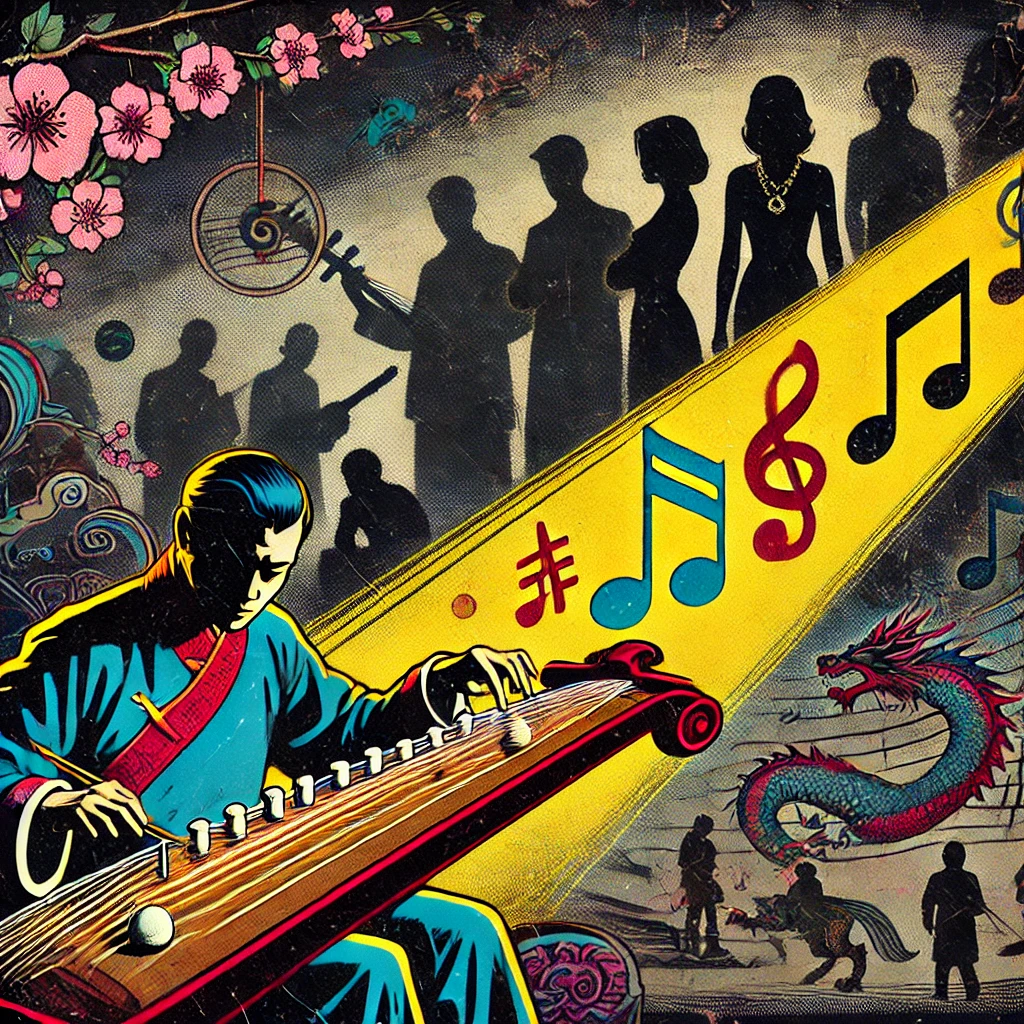Gender in Chinese Music
Abstract
Gender in Chinese Music is an admirably ambitious volume that spans an impressive range of temporal and geographical axes, forcefully demonstrating the breathtaking range of musical traditions in the PRC. There are too many gems in this book to address here so I will limit myself to presenting a few sample chapters, chosen in part with an aim to demonstrate the volume’s remarkable array of topics.
Content
Gender in Chinese Music is an admirably ambitious volume that spans an impressive range of temporal and geographical axes, forcefully demonstrating the breathtaking range of musical traditions in the PRC. There are too many gems in this book to address here so I will limit myself to presenting a few sample chapters, chosen in part with an aim to demonstrate the volume’s remarkable array of topics.
Tiantian Zheng’s chapter expertly links historical practices of gender construction among imperial Chinese courtesans with the contemporary setting of KTV (karaoke TV). In both worlds, women are presented as gendered objects of desire: their use of song in KTV aligns them lyrically with traditional roles of passive and subservient women, even as they control the thematic direction of the gendered narratives in choosing which songs to perform. Zheng points out that men also perform masculinity: in traditional China, elite men studied guidelines on how to be good patrons, while in contemporary China, the public performance of men as sexual consumers also plays an important part in their construction of masculinity among their …
http://ml.oxfordjournals.org/content/95/2/314.extract
Gender in Chinese music, as in many cultural contexts, plays a significant role in the performance, creation, and reception of music. The intersection of gender and music in China is shaped by historical, social, and cultural dynamics, reflecting broader gender roles within Chinese society and evolving over time. From ancient traditions to contemporary scenes, gender influences the types of music individuals are expected to perform or enjoy, the instruments they play, and the themes explored in musical compositions.
Historical Perspectives
– Imperial China: In historical periods, music was an important aspect of court life and Confucian ritual, with specific roles and expectations for male and female performers. Women often performed in court as entertainers, but their contributions were sometimes undervalued compared to their male counterparts.
– Nanguan and Beiguan: These traditional musical forms exemplify how gender roles can be reflected in musical genres. Nanguan, often associated with more refined, indoor performances, traditionally saw more female participation, whereas Beiguan, being more outdoor and ceremonial, was predominantly male.
– The Role of Courtesans: In certain historical periods, courtesans (highly educated female entertainers) were key custodians and transmitters of sophisticated musical and poetic traditions, challenging simple narratives about gender and cultural hierarchy.
Modern and Contemporary Transformations
– 20th Century: The 20th century, especially after the establishment of the People’s Republic of China in 1949, saw significant changes in gender roles within music. The government promoted gender equality and women’s participation in all areas of society, including music. Revolutionary songs and operas often featured strong female characters, reflecting new ideals.
– Pop and Rock Music: In contemporary times, the pop music scene in China, much like in other parts of the world, showcases a wide range of gender expressions. Female and male artists often have distinct public images and musical styles, catering to diverse audiences. The rise of rock and alternative music scenes has also provided spaces for challenging traditional gender norms.
– C-Pop and Gender Dynamics: Chinese pop music (C-Pop), including subgenres like Mandopop and Cantopop, features artists whose work and personas sometimes play with or challenge traditional gender expectations. This includes androgynous presentations and themes that address gender issues directly.
Traditional Instruments and Gender
Certain traditional Chinese instruments have been historically associated with specific genders. For example, the guzheng (a type of zither) and the pipa (a type of lute) have often been associated with female musicians, both in classical settings and in popular imagination. Conversely, instruments like the erhu (a two-stringed fiddle) have not been as strongly gender-typed.
Gender and Performance
Performance contexts can also reflect and reinforce gender roles. For example, in Peking opera, the tradition of male actors playing female roles (dan roles) has a long history, showcasing the fluidity of gender representation in Chinese performing arts. However, these performances are layered with historical and cultural meanings that complicate simple readings of gender roles. Conclusion
Gender in Chinese music is a complex and dynamic field, reflecting broader societal norms, historical changes, and contemporary challenges. As in many cultural contexts, music in China serves as a mirror to societal attitudes towards gender, as well as a platform for challenging and reinterpreting those attitudes. The intersection of gender and music remains a vibrant area of cultural expression and social commentary in China, offering insights into both the continuity and change of Chinese society’s views on gender.
